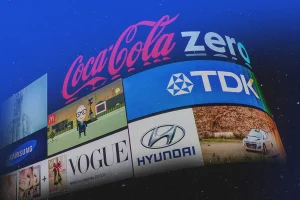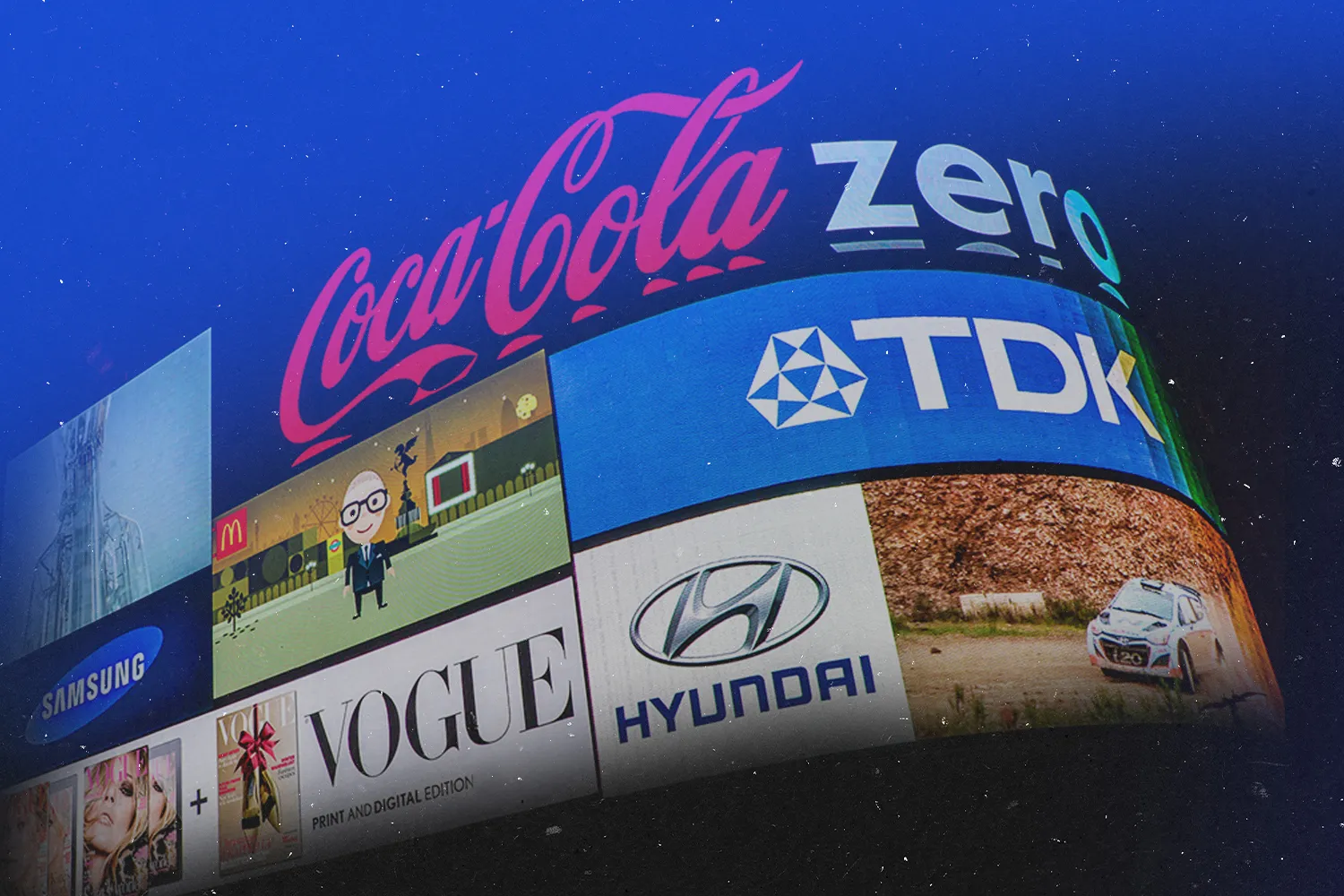
Imagine looking up at the night sky in wonder. It’s clear and the blackness is studded with stars, thousands of light years away. The Sea of Tranquility is clear on the full moon’s surface. And then, drifting across your vision, larger still, comes a soda brand logo followed by a QR code. You point your phone and get updated on its latest flavor. The final frontier racks up a sale.
If advertising from space sounds like the stuff of science fiction, the award-winning Russian adman Vlad Sitnikov and his company StartRocket have just that in mind. He proposes an array, or constellation, of up to 400 “cubesats” — miniature maneuverable satellites — with the ability to project the messaging of any brand willing to pay into the night sky.
While the war with Ukraine has somewhat put plans on ice for the moment, he’s out to raise some $100 million in investment and, in conjunction with Avant Space, another space advertising startup, use off-the-shelf components assembled in Malaysia to have said array up and running just a year later. Avant Space has already been granted a patent and completed testing from stratospheric balloons. Major brands have expressed tentative interest.
“Wherever there is commerce, advertising will be there,” Sitnikov tells me. “It’s an inevitable step. People get upset about advertising because it’s designed to interrupt — that’s how it gets our attention. But you can’t develop any economy without it.”
Space, he points out, is increasingly just that: not solely of scientific or military interest, but a business, driven in large part by private enterprise.
Besides, advertising in space is already happening: from Pepsi launching an oversized can replica outside Russia’s Mir space station in 1996 to Felix Baumgartner’s Red Bull-sponsored skydive in 2012 to Tesla putting a car into orbit in 2018. Even NASA has taken the money, transporting bottles of an Estée Lauder skincare serum into space for a photoshoot. Why all the snobbery about the next logical step in space advertising, Sitnokov asks, especially when other forms of galactic commercialization, like asteroid mining, are fomenting plenty of excitement in some circles?
Astronomers vs. Admen
John Barentine is spearheading opposition to advertising satellites. A fellow of the Royal Astronomical Society and a member of the American Astronomical Society’s light pollution committee, he argues that the light reflected off and by advertising cubesats would be hugely detrimental to astronomy; they are designed to produce light visible to the unaided eye, so you can imagine how easily they’d interfere with super-sensitive telescopes.
“You can move an observatory on Earth to places with very low light pollution,” Barentine says. But “you can’t do that if the light is coming from space.” However, he understands that not many people care what the impact on astronomy might be.
“It’s just not of interest to enough people, especially against the interests of commerce,” he reckons. He thinks what might carry the day eventually is a deeper, more widespread and more human hostility to the idea of ads in space.
“They would be too intrusive,” he says. “You can turn off a TV ad. And while people have become desensitized to billboards, I don’t think we’ll turn a blind eye to billboards in space, even as our thinking about how we use space — more as an economy — is changing rapidly.” The idea of space as a global commons, as a pristine environment worthy of preservation, may have already sailed, much as it has for the oceans, but “that doesn’t mean we still can’t put in guardrails,” he adds.
If a client came to me and said they wanted to project [their brand] to Earth from space…I’d explain why it wouldn’t work — because it’s likely that everyone would hate them for it.
– Chris Rose, cofounder of Sent Into Space
U.S. policy is on his side. Congress banned the launch of “obtrusive” space advertising programs from U.S. territory in 2000, inspired by a Georgia-based marketing company’s plan to put a billboard into the Earth’s atmosphere for the 1996 Summer Olympics. The problem, of course, is that this does not stop other spacefaring nations from sending up such ads. But Barentine believes that the real impetus to stop advertising from space will likely only come after the shock of “a very conspicuous case” of it happening first: seeing will be disbelieving. That might light a fire under enough member countries of the United Nations to embrace U.S. policy as their own. However, this could take years.
Sitnikov understands the resistance. He’s a self-described space nerd who jokes that when he’s made his billions from space advertising he’ll be booking a seat on the next rocket.
“For sure there should be limits on advertising in space,” he insists. StartRocket proposes the use of its constellation only at dusk and dawn, not at night — not least because nobody will pay to advertise when everyone is asleep — and only over large population centers, not, say, national parks or any remote spot where an observatory is likely to be. (Again, there aren’t enough eyeballs there.) He also suggests that such a constellation could also have the potential to be used for public service messaging.
Few in the scientific community are convinced. Piero Benvenuti, professor emeritus of astrophysics at the University of Padua — who first urged the banning of advertising-by-satellite constellation at the United Nations’ Committee on the Peaceful Uses of Outer Space, and who will do so again this July — puts the counter-argument simply: “Advertising can already be done and is done extensively on the ground. There’s simply no need for it in space too.”
Stuffing Space With Satellites
Benvenuti isn’t against all modern satellites, even those that have interfered with astronomic research. Astronomy first caught onto the idea that satellite constellations can have a negative impact on its work with the deployment of SpaceX’s Starlink six years ago, but in that instance there was a recognition of its social benefit, and so of the need for astronomy to collaborate with such endeavors.
The problem, Benvenuti worries, is not just that such constellations and proposed ones — such as the “Golden Dome” defense array recently proposed by President Donald Trump — require constant replenishment with new satellites (satellites in low-Earth orbit decay over time through friction with the thermosphere) and that this, in turn, may have an as yet unknown impact on the chemical composition of the atmosphere. It’s that low-Earth orbit is just getting way too crowded already.
“People think of space as infinite, but low-Earth orbit isn’t,” he stresses. “Ideally we might limit the number of satellites in low-Earth orbit, but that raises the hard question of how that number might be distributed among nations. But clearly allowing even more satellites into space for advertising makes no sense.”
Jan Siminski says these satellite swarms could prove catastrophic. He monitors potential debris collisions for satellites for the European Space Agency, and with some 500,000 bits of space junk in orbit already, he has to pay close attention. He cites the so-called Kessler syndrome, first proposed by NASA scientists Donald Kessler and Burton Cour-Palais in the late ‘70s, in which a crowded orbit sees a greater frequency of collisions, which creates a debris field, which then causes more collisions, and on and on.
“Of course the probability of a collision increases with the number of satellites and if [an advertising constellation is] flying in formation you could get a cascade effect within that constellation. So its operators would have to be very confident of their control,” says Siminski. “But the potential for a cascade effectively poses a risk to all satellites and the systems they provide [from Earth observation to meteorology to communications]. And, long term, the effect could be that we can’t launch into space anymore.”
The Allure of Space
There is an alternative for the future of space advertising. While it may not involve projecting logos or slogans from on high, one niche business has for the last 15 years been busy sending products into space, filming some complex stunt involving them for social media, and then returning them to Earth. Originally launched as a test platform for the then-fledgling cubesat industry, the U.K.-based Sent Into Space soon found itself working for the likes of Sony, Heinz, Jameson, Mattel, Visa and Samsonite. It even fired an Oreo into infinity and beyond using an air-powered cannon.
“Space very quickly became an advertising platform for brands whose products are not necessarily related to space but who want to see them against that amazing vista. People know that’s hard to pull off and so it signals the brand’s success and ambition,” suggests Chris Rose, cofounder of Sent Into Space, which mostly uses high-altitude balloons to carry payloads of up to three tons. “The fact is that we’re in the midst of a new space race, one centered around culture and entertainment as much as exploration. These [launches] get hundreds of millions of views online. The allure of space to brands will wane [in time], but I think we’ll see exponential growth first.”
Critically though, Rose emphasizes, Sent Into Space’s projects are fleeting and passive. And that is how he believes space advertising has to be.
“We go up, we don’t hang around, we come down, we leave nothing behind,” he says. “If a client came to me and said they wanted to project [their brand] to Earth from space, I’d tell them that the idea was gross. And I’d explain why it wouldn’t work — because it’s likely that everyone would hate them for it.”

